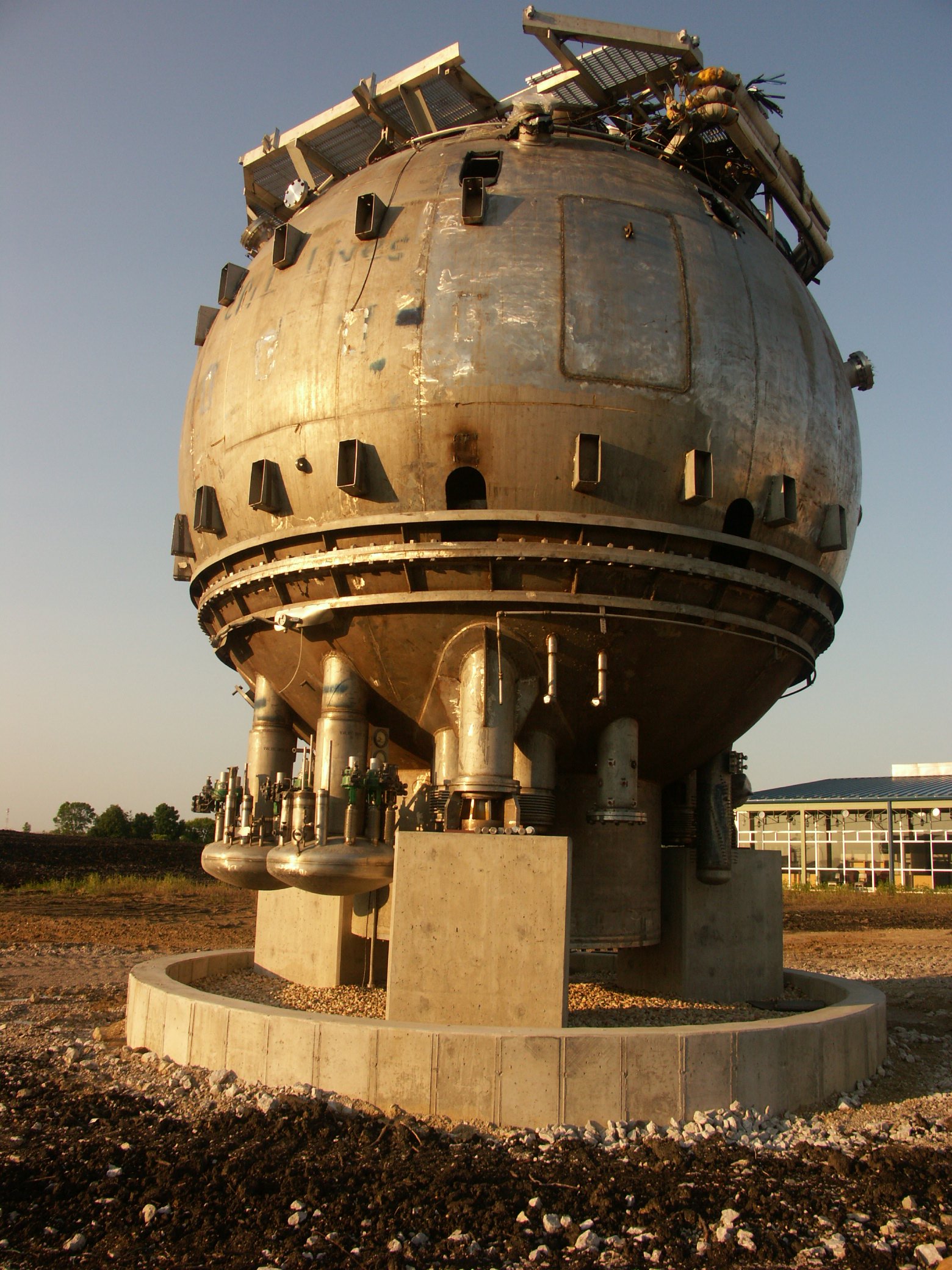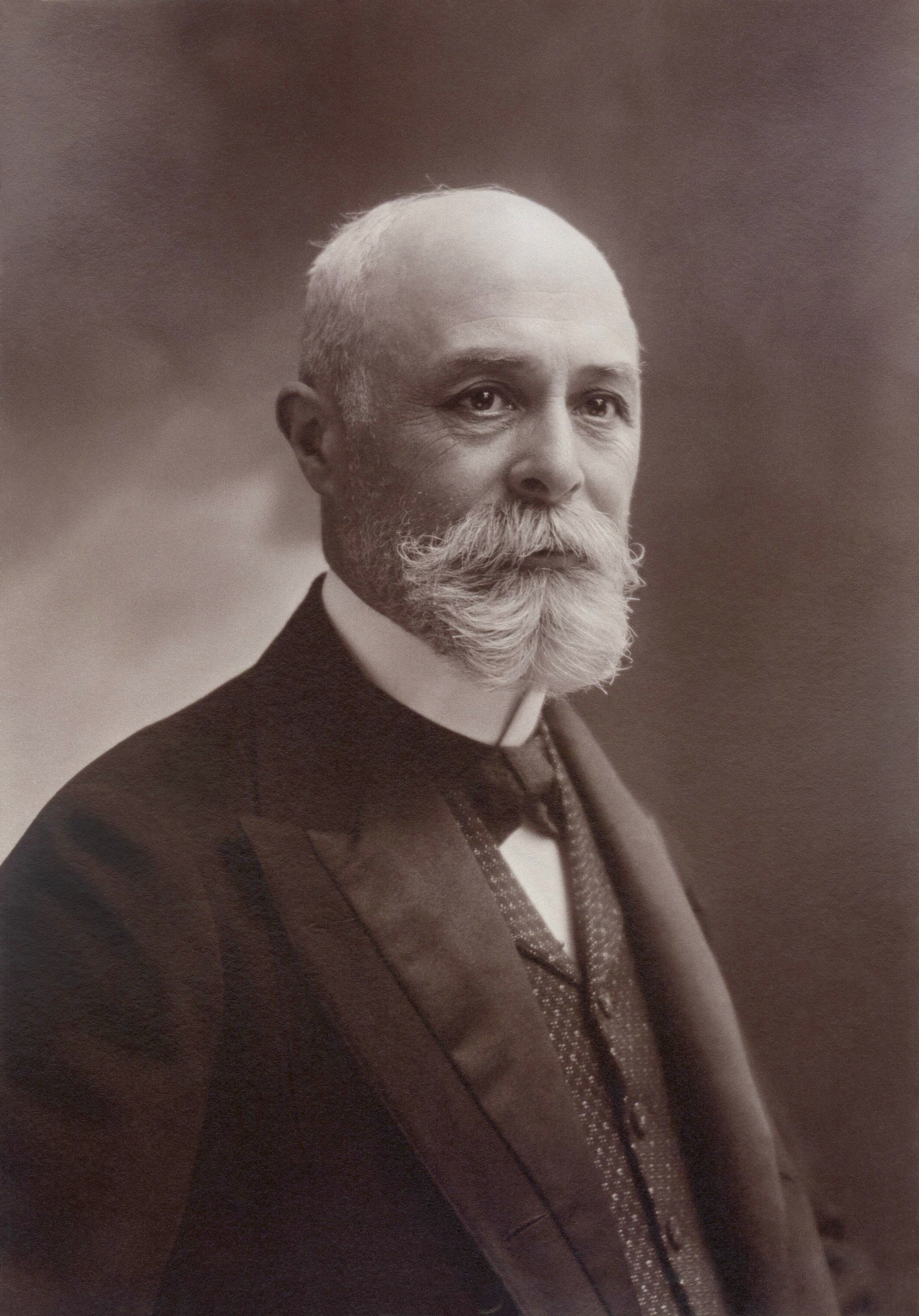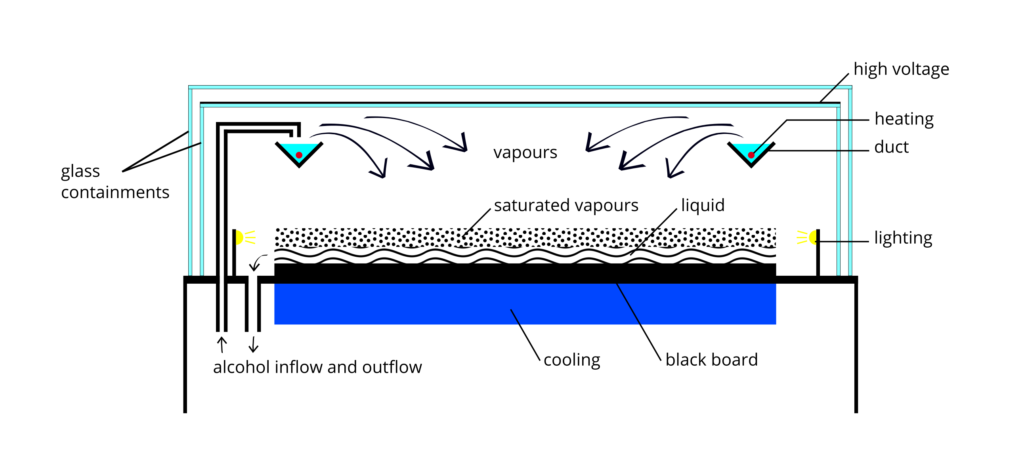|
Donald A. Glaser
Donald Arthur Glaser (September 21, 1926 – February 28, 2013) was an American physicist who received the Nobel Prize in Physics in 1960 for his invention of the bubble chamber. Education Born in Cleveland, Ohio, Glaser completed his Bachelor of Science degree in physics and mathematics from Case School of Applied Science in 1946. He completed his PhD in physics from the California Institute of Technology in 1949. Glaser accepted a position as an instructor at the University of Michigan in 1949, and was promoted to professor in 1957. He joined the faculty of the University of California at Berkeley, in 1959, as a professor of physics. During this time his research concerned short-lived elementary particles. The bubble chamber enabled him to observe the paths and lifetimes of the particles. Starting in 1962, Glaser changed his field of research to molecular biology, starting with a project on ultraviolet-induced cancer. In 1964, he was given the additional title of professor of ... [...More Info...] [...Related Items...] OR: [Wikipedia] [Google] [Baidu] |
Cleveland Heights High School
Cleveland Heights High School is the senior high school of the Cleveland Heights-University Heights City School District, located in Cleveland Heights, Ohio, United States. History Cleveland Heights High School was established in 1901 by the Cleveland Heights Board of Education. The building that is currently being used opened in 1926. The student population was 1,772 as of the 2018–2019, school year with 15.02 student/teacher ratio. The student body is mostly African-American, with 75 percent identifying themselves as such, and Caucasian (15%), multiracial (6%), Hispanic (3%), and Asian (2%) minorities. Heights athletic teams play in Division I. After 94 years in the Lake Erie League as one of the conference's founding members, Heights began competing in the Greater Cleveland Conference starting with the 2023–2024 school year. The school is known for its strong music departments, including the Vocal Music Department (VMD) which includes A Cappella, Men's and Women's Ba ... [...More Info...] [...Related Items...] OR: [Wikipedia] [Google] [Baidu] |
Prototype
A prototype is an early sample, model, or release of a product built to test a concept or process. It is a term used in a variety of contexts, including semantics, design, electronics, and Software prototyping, software programming. A prototype is generally used to evaluate a new design to enhance precision by system analysts and users. Prototyping serves to provide specifications for a real, working system rather than a theoretical one. Physical prototyping has a long history, and paper prototyping and virtual prototyping now extensively complement it. In some design workflow models, creating a prototype (a process sometimes called materialization) is the step between the Formal specification, formalization and the evaluation of an idea. A prototype can also mean a typical example of something such as in the use of the derivation prototypical. This is a useful term in identifying objects, behaviours and concepts which are considered the accepted norm and is analogous with terms ... [...More Info...] [...Related Items...] OR: [Wikipedia] [Google] [Baidu] |
Beer
Beer is an alcoholic beverage produced by the brewing and fermentation of starches from cereal grain—most commonly malted barley, although wheat, maize (corn), rice, and oats are also used. The grain is mashed to convert starch in the grain to sugars, which dissolve in water to form wort. Fermentation of the wort by yeast produces ethanol and carbonation in the beer. Beer is one of the oldest and most widely consumed alcoholic drinks in the world, and one of the most popular of all drinks. Most modern beer is brewed with hops, which add bitterness and other flavours and act as a natural preservative and stabilising agent. Other flavouring agents, such as gruit, herbs, or fruits, may be included or used instead of hops. In commercial brewing, natural carbonation is often replaced with forced carbonation. Beer is distributed in bottles and cans, and is commonly available on draught in pubs and bars. The brewing industry is a global business, consisting of several ... [...More Info...] [...Related Items...] OR: [Wikipedia] [Google] [Baidu] |
University Of Chicago
The University of Chicago (UChicago, Chicago, or UChi) is a Private university, private research university in Chicago, Illinois, United States. Its main campus is in the Hyde Park, Chicago, Hyde Park neighborhood on Chicago's South Side, Chicago, South Side, near the shore of Lake Michigan about from Chicago Loop, the Loop. The university is composed of an College of the University of Chicago, undergraduate college and four graduate divisions: Biological Science, Arts & Humanities, Physical Science, and Social Science, which include various organized departments and institutes. In addition, the university operates eight professional schools in the fields of University of Chicago Booth School of Business, business, Crown Family School of Social Work, Policy, and Practice, social work, University of Chicago Divinity School, divinity, Graham School of Continuing Liberal and Professional Studies, continuing studies, Harris School of Public Policy, public policy, University of Chi ... [...More Info...] [...Related Items...] OR: [Wikipedia] [Google] [Baidu] |
Hydrogen
Hydrogen is a chemical element; it has chemical symbol, symbol H and atomic number 1. It is the lightest and abundance of the chemical elements, most abundant chemical element in the universe, constituting about 75% of all baryon, normal matter. Under standard conditions, hydrogen is a gas of diatomic molecules with the chemical formula, formula , called dihydrogen, or sometimes hydrogen gas, molecular hydrogen, or simply hydrogen. Dihydrogen is colorless, odorless, non-toxic, and highly combustible. Stars, including the Sun, mainly consist of hydrogen in a plasma state, while on Earth, hydrogen is found as the gas (dihydrogen) and in molecular forms, such as in water and organic compounds. The most common isotope of hydrogen (H) consists of one proton, one electron, and no neutrons. Hydrogen gas was first produced artificially in the 17th century by the reaction of acids with metals. Henry Cavendish, in 1766–1781, identified hydrogen gas as a distinct substance and discovere ... [...More Info...] [...Related Items...] OR: [Wikipedia] [Google] [Baidu] |
Diethyl Ether
Diethyl ether, or simply ether, is an organic compound with the chemical formula , sometimes abbreviated as . It is a colourless, highly Volatility (chemistry), volatile, sweet-smelling ("ethereal odour"), extremely flammable liquid. It belongs to the ether class of organic compounds. It is a common solvent and was formerly used as a general anesthetic. Production Most diethyl ether is produced as a byproduct of the vapor-phase Hydration reaction, hydration of ethylene to make ethanol. This process uses solid-supported phosphoric acid Catalysis, catalysts and can be adjusted to make more ether if the need arises: Vapor-phase Dehydration reaction, dehydration of ethanol over some Aluminium oxide, alumina catalysts can give diethyl ether yields of up to 95%. : Diethyl ether can be prepared both in laboratories and on an industrial scale by the acid ether synthesis. Uses The dominant use of diethyl ether is as a solvent. One particular application is in the production of cell ... [...More Info...] [...Related Items...] OR: [Wikipedia] [Google] [Baidu] |
Max Delbrück
Max Ludwig Henning Delbrück (; September 4, 1906 – March 9, 1981) was a German–American biophysicist who participated in launching the molecular biology research program in the late 1930s. He stimulated physical science, physical scientists' interest into biology, especially as to basic research to physically explain genes, mysterious at the time. Formed in 1945 and led by Delbrück along with Salvador Luria and Alfred Hershey, the Phage Group made substantial headway unraveling important aspects of genetics. The three shared the 1969 Nobel Prize in Physiology or Medicine "for their discoveries concerning the replication mechanism and the genetic structure of viruses"."The Nobel Prize in Physiology or Medicine 1969" , Nobel Media AB 2013, ''Nobelprize.org'', Web access November 6, 2013 ... [...More Info...] [...Related Items...] OR: [Wikipedia] [Google] [Baidu] |
Molecular Genetics
Molecular genetics is a branch of biology that addresses how differences in the structures or expression of DNA molecules manifests as variation among organisms. Molecular genetics often applies an "investigative approach" to determine the structure and/or function of genes in an organism's genome using genetic screens. The field of study is based on the merging of several sub-fields in biology: classical Mendelian inheritance, cellular biology, molecular biology, biochemistry, and biotechnology. It integrates these disciplines to explore things like genetic inheritance, gene regulation and expression, and the molecular mechanism behind various life processes. A key goal of molecular genetics is to identify and study genetic mutations. Researchers search for mutations in a gene or induce mutations in a gene to link a gene sequence to a specific phenotype. Therefore molecular genetics is a powerful methodology for linking mutations to genetic conditions that may aid th ... [...More Info...] [...Related Items...] OR: [Wikipedia] [Google] [Baidu] |
Nuclear Physics
Nuclear physics is the field of physics that studies atomic nuclei and their constituents and interactions, in addition to the study of other forms of nuclear matter. Nuclear physics should not be confused with atomic physics, which studies the atom as a whole, including its electrons. Discoveries in nuclear physics have led to applications in many fields such as nuclear power, nuclear weapons, nuclear medicine and magnetic resonance imaging, industrial and agricultural isotopes, ion implantation in materials engineering, and radiocarbon dating in geology and archaeology. Such applications are studied in the field of nuclear engineering. Particle physics evolved out of nuclear physics and the two fields are typically taught in close association. Nuclear astrophysics, the application of nuclear physics to astrophysics, is crucial in explaining the inner workings of stars and the origin of the chemical elements. History The history of nuclear physics as a discipline ... [...More Info...] [...Related Items...] OR: [Wikipedia] [Google] [Baidu] |
Cloud Chamber
A cloud chamber, also known as a Wilson chamber, is a particle detector used for visualizing the passage of ionizing radiation. A cloud chamber consists of a sealed environment containing a supersaturated vapor of water or alcohol. An energetic charged particle (for example, an alpha or beta particle) interacts with the gaseous mixture by knocking electrons off gas molecules via electrostatic forces during collisions, resulting in a trail of ionized gas particles. The resulting ions act as condensation centers around which a mist-like trail of small droplets form if the gas mixture is at the point of condensation. These droplets are visible as a "cloud" track that persists for several seconds while the droplets fall through the vapor. These tracks have characteristic shapes. For example, an alpha particle track is thick and straight, while a beta particle track is wispy and shows more evidence of deflections by collisions. Cloud chambers were invented in the early 1900s by ... [...More Info...] [...Related Items...] OR: [Wikipedia] [Google] [Baidu] |









